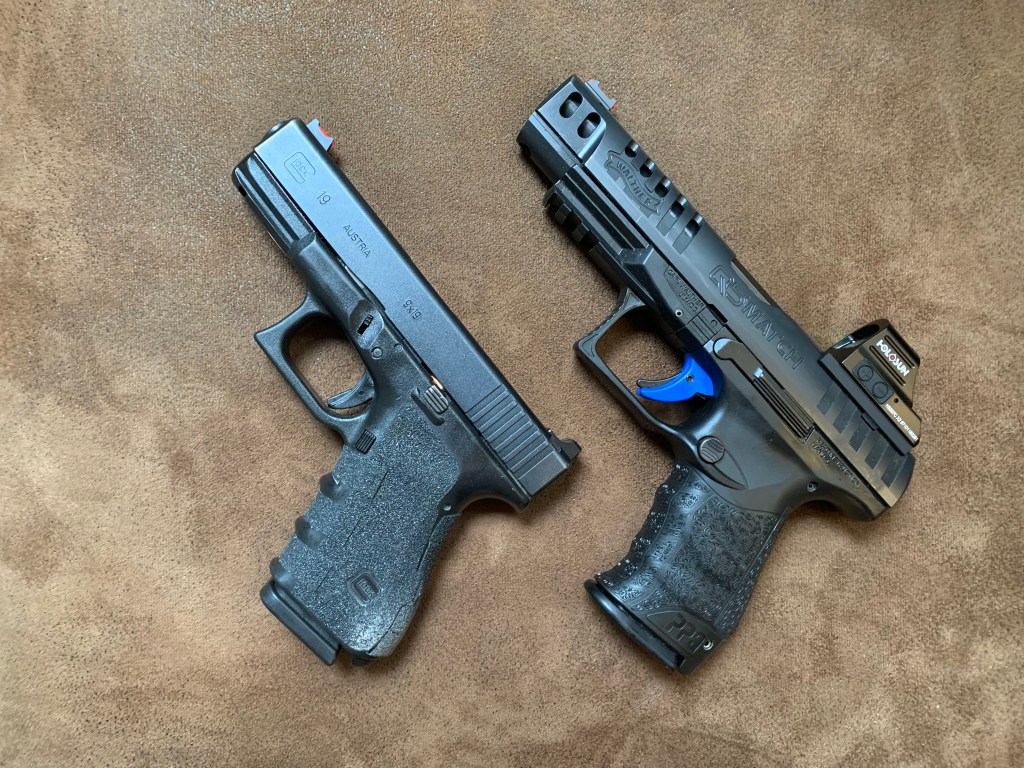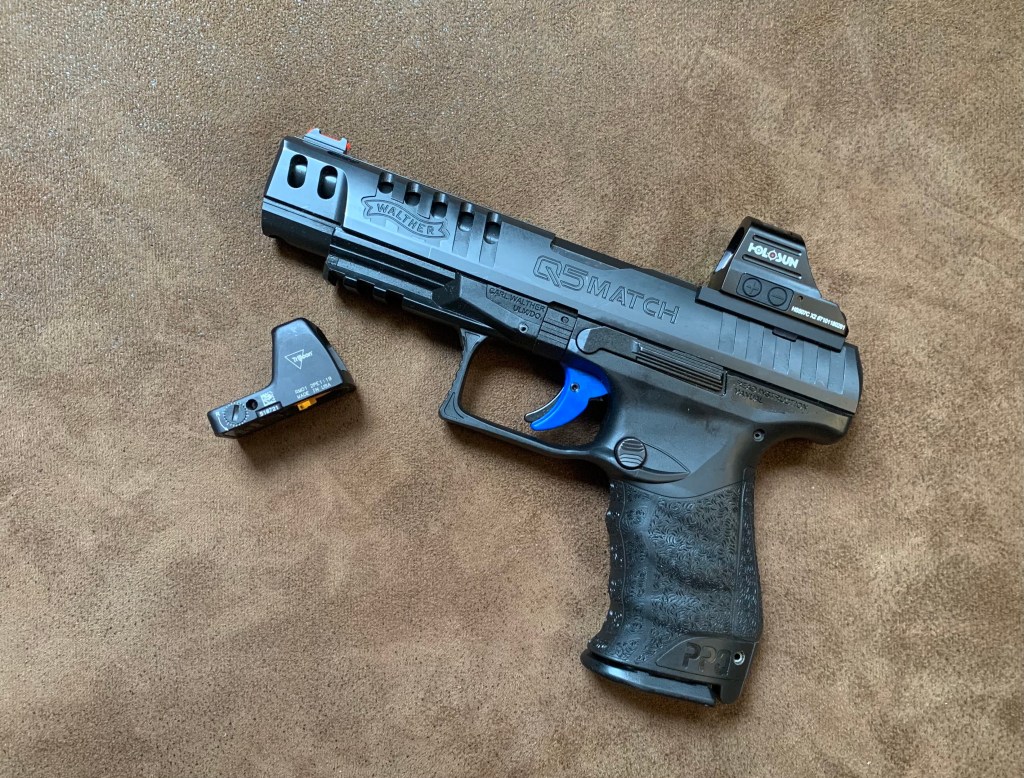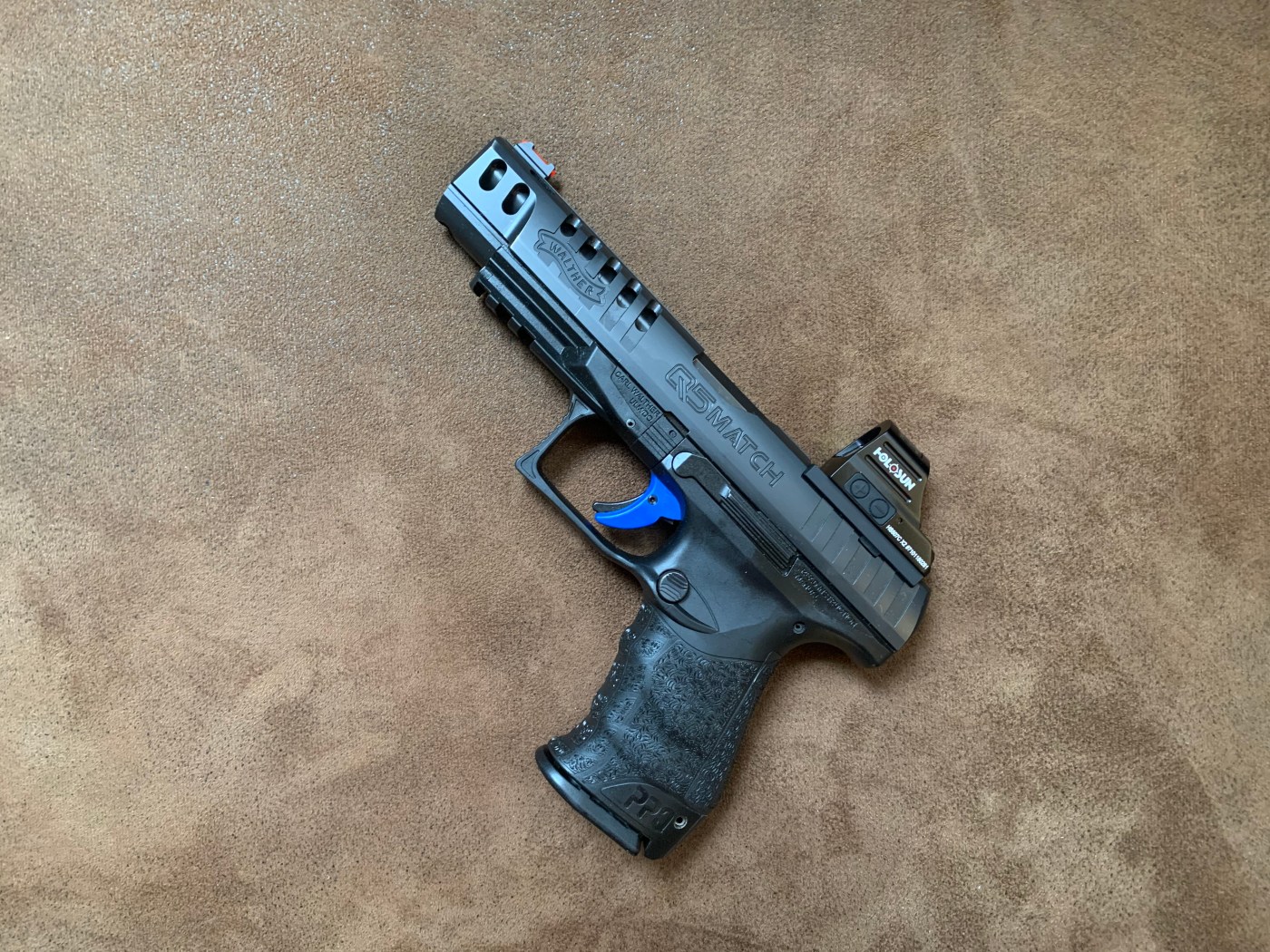Rocket surgery, in case you are wondering, is the combination of rocket science and brain surgery. So, in other words, it is a very complicated affair. Shooting with a red dot on a pistol, however, is not at all as complicated as rocket surgery, despite the fact that some would have you believe otherwise.
I have been an iron sights guy for my entire run thus far and I have not dabbled much with red dots on pistols until recently. With that said, I have nothing against red dots and I think the technology is now viable from a reliability standpoint. Also, the dot provides an undeniable advantage for distance shooting. Fifty and one-hundred yard shots are consistently doable with a dot on a pistol whereas only the better shooters can do so with irons. However, within the more common self-defense distances is where the argument over the dot comes in:
Many shooters find it difficult to “acquire” the dot within the glass of the optic on presentation, leading them to proclaim that dots are slower than are iron sights at close distances. I don’t find that to be true, and there are many high-end shooters who prove that not to be true. It simply takes a significant dedication to dry practice to get your presentation right so that you immediately pick up the dot when the gun comes online.
To Dot, or Not to Dot?
The argument that irons are “faster” at close range is not sound as the difference can be mitigated with good practice and a solid presentation. There is, however, a debate to be had over whether the dot is right for the average shooter or only for dedicated shooters that will invest the time to get proficient with it. In my opinion, the debate for the good shooter should be: Option A, stick with irons because they are simpler and lower maintenance and entirely adequate for typical defensive distances, or, Option B, embrace the dot for the undeniable distance shooting advantage and possibly the benefits it offers for overcoming eyesight issues. Choose accordingly.

Maintenance Considerations
The setup must be sound. Use a good red dot as cheap and low-quality sights cause nothing but aggravation. The good news is there are solid dot sights now for around $300 and up. For example, the Holosun 507c is just over $300 and has proven very reliable for most that use it and it has a 50,000 hour battery life. There are quite a few reliable dots now and they are much more affordable than they used to be. I have a Trijicon RMR that is twice the price of the Holosun, but I have the Holosun 507c on my newly-fangled dot gun because I prefer it.
Also, install everything with care and monitor it. Be sure to lock down all mounting screws with Locktight or some other threat locker. Keep an eye on screws to make sure they are not backing out over time. If you are setting up your actual carry gun with a dot then I recommend going with a solution that provides backup iron sights as even the new and exceedingly reliable dots are still machines that can fail.

Training with the Dot
The greatest challenge to getting good with a red dot sight on a pistol is “acquiring” the dot. What most shooters find when using an optic for the first time is that the dot is not visible when the pistol is presented. This leads most people to fish around, turning the gun around in the grip, to acquire the dot. As should be self-evident, there is no way to shoot fast like this. This issue is what leads many to proclaim that dots are slower than irons at close range. This is simply not true, as with proper training and practice, you can acquire the dot immediately on the presentation. But, it takes some work.
Train to get the presentation right so that you see the dot as soon as the gun comes online. The good news is that the majority of the needed practice can be done in dry work. If you choose to embrace the dot life, I have some advice to get you started on your journey. Watch the videos below to get an idea of how to acquire the dot on presentation.
Also of note: the two videos showing live fire were taken within only my first 100 rounds of live fire with the dot, and I did that by design. I am already doing a decent job of quickly acquiring the dot due to my dry work in the two weeks prior to filming these videos. Tracking the dot comes easy if you are familiar with the concept of looking at a “sight movie” rather than a “sight picture” under recoil. My point in sharing this information with you is not to proclaim myself a dot guru, as it is still new and secondary to me, but to show that, with some dedicated dry work, an iron sights shooter can get proficient with the dot fairly easily if you approach it the right way and do the needed work in dry practice.
Watch an overview on acquiring the dot in presentation:
Watch a live fire demo of acquiring the dot:
Watch an overview on tracking the dot while shooting:
Watch a live fire demo of tracking the dot:


Agreed that for the average person who isn’t going to practice regularly, a RDS is probably not a good choice, and they should just stick with being proficient using irons. But I also think that once one is proficient at acquiring the dot on the draw, super-imposing a dot over your target while remaining target focused the entire time is generally going to be faster than trying to line two things up properly and place them on a target. This isn’t just an advantage at longer distances – it’s an advantage at any distance where one has the time and luxury to employ an aiming system.
It’s great to see how far pistol red dots have come in the last few years – many of the old arguments against them simply don’t apply anymore, and I think within a few more years, having a red dot on a pistol will be just as commonplace as having one on a carbine.
LikeLike
I think you are correct, they will become more and more common place, and with training they are, indeed, just as fast at closer ranges.
LikeLike